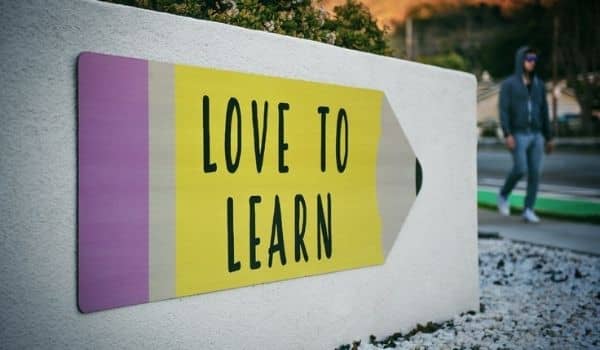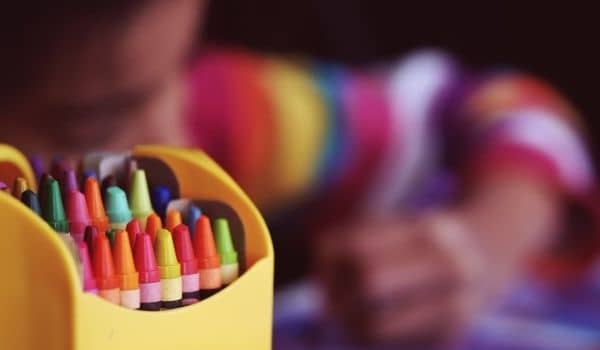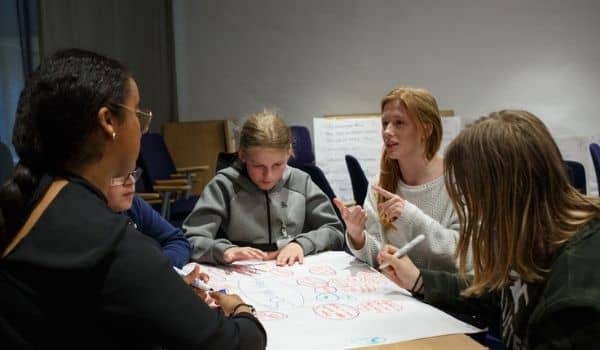Everything You Need to Know About the Dutch School System
Categories: Education
When you’re not familiar with it, a foreign school system can be incredibly confusing. There are usually a lot of if-thens involved that seem logical to those who grew up within it. But to others? Not so much.
But not to worry. In this post, you’ll find everything you need to know about the Dutch school system. This will help you determine where to send your child or children, no matter what age they are.

First, let’s cover some overarching basics that apply to the system as a whole.
Leerplicht
The Dutch law stipulates that all children aged 5 to 16 who live in the Netherlands have to attend school. This is called leerplicht. Students aged 16 to 18 have to attend some form of schooling at least two days a week. This is called partiële leerplicht. Once a child turns 18 or once it receives a vwo, havo or mbo diploma, compulsory education ends. We’ll explain these diplomas further down.
Cost
Public schools are free but may ask for a contribution from the parents (ouderbijdrage) for things like outings and celebrations.
Lunch at School
Dutch schools don’t provide school lunches. Students are expected to bring their own lunch, typically consisting of a drink, a healthy snack, and sandwiches.
Parental Involvement
Primary schools often enlist the help of parents for tasks and activities. These are things like reading practice, checking children for nits, or organizing activities for students. Being an involved parent can be an easy way to get to know other parents and improve your Dutch. It may also allow you to share some of your own culture through cooking workshops or extracurricular activities for students.
Holidays
The Netherlands is divided into three regions for school holidays: North, Central, and South. Holidays that rely on specific dates like Christmas or Carnaval often take place at the same time. The summer holidays will start and end at different times for the three regions. The reason for this is to avoid overly crowded roads and holiday destinations.
There are typically five holidays throughout the year within the Dutch school system:
- Herfstvakantie: one week in October
- Kerstvakantie: two weeks during December and January, covering Christmas and New Year’s
- Carnavalsvakantie or voorjaarsvakantie: one week during February or March
- Meivakantie: one or two weeks in April or May
- Zomervakantie: six weeks in July and August
Outside of these holidays, parents may not keep their children at home or take them away on vacation. Only exceptional circumstances like a wedding or funeral, for example, allow students to skip school outside of these periods.

Language
Classes are taught in Dutch at typical primary and high schools. At universities, it’s becoming more and more common to see (part of) the curriculum entirely in English.
Primary schools typically start teaching English in the final two years, but some start earlier than that.
Bilingual education (tweetalig onderwijs or TTO) is becoming more common for secondary schools. In TTO schools, around half of the subjects are taught in English. During these subjects, English is the primary language. Besides the regular diploma, students from a TTO school can get an English language certificate to show their proficiency.
A bilingual school could be a great option for an older child who already speaks English and is learning Dutch. Students there speak Dutch around half the time they spend at school. TTO schools follow the same curriculum as regular Dutch high schools, and final exams all take place in Dutch.
The Netherlands also offers a variety of international schools. These schools are for students who don’t have Dutch nationality or who don’t stay in the country for long. They are private and not funded by the government, which makes them more expensive. International schools follow an international curriculum that is different from the Dutch curriculum. Classes are often fully taught in English.
Specific Philosophies
Some schools follow a specific religion and will dedicate a portion of their curriculum to that religion. Usually, these schools are inclusive and will accept students from any background.
Many schools base their approach on a specific educational philosophy like Montessori, Dalton, or Jenaplan. These philosophies often encourage creativity and embracing the learning process. These schools are open to all students, regardless of their background.
Special Needs
According to the Dutch education law, children with a (learning) disability are welcomed at ‘regular’ schools. Special needs children will usually start out at a mainstream school, where adaptations help them fulfill their potential.
For children whose disabilities are too severe to remain in a standard school, the Dutch school system offers special schools. They have smaller groups and teachers who are trained to educate children with special needs. These schools are referred to as speciaal onderwijs. Your local doctor (huisarts) will assess your child and advise you on where to find the support your child needs.
Now that we’ve covered the overarching information, let’s dive in and examine the different layers of the school system.
The Layers of the Dutch School System
Daycare (age 0-4)
In Dutch, you can refer to daycare with several words: kinderdagverblijf, kinderopvang, peuterspeelzaal, or crèche. They all encompass the same thing. A place where your child is taken care of, and where they learn to play and socialize with other children. This is not compulsory at all: it’s up to you whether you want your child to go.
Dutch children often go to daycare before starting school. Because both parents are working or because the parents want their child to socialize with other children.
On the website of the Rijksoverheid and the Belastingdienst, you can find information about kinderopvangtoeslag. This is a benefit to the cost of daycare. You may be eligible to receive it if you fulfill a specific list of requirements.
Babies can go to some daycares as early as 6 weeks old. Other daycares won’t take babies before they’re a few months old. Children can stay in daycare until they’re old enough to go to school.

Primary School (age 4-12)
Dutch primary schools are divided into three brackets, and each grade is referred to as a group (groep):
Kleuters (age 4-6, groep 1-2)
The focus in these first two years is the transition from learning through play to more systematic learning. Children will learn things like the days of the week and colors. They also learn about the structure of a school day and how to interact with others.
Middenbouw (age 6-9, groep 3, 4, 5)
In groep 3, children learn to read and write and are taught basic maths skills. These skills will develop further in the following two years. Some schools also offer adjacent subjects like history, science, and music more or less regularly. The focus will depend on the school, its resources, and the educational method they use.
Bovenbouw (age 9-12, groep 6, 7, 8)
In the last year of elementary school, children get a recommendation for high schools that would suit them. This recommendation is partly determined by the results of the CITO-toets – a national aptitude test. Partly, it’s based on the information from the leerlingvolgsysteem, a monitoring system that follows students throughout their elementary school career. Teachers will often also take into account their own experience with your child in the classroom.
To help you pick the right high school for your child, many schools hold open days (open dagen). These allow you to walk around the building and talk to some of the teachers and students. In some areas, your child will be able to go to the school of their choice with no issues. However, especially in large cities like Amsterdam, schools have limited spaces. In that case, lotteries may determine which students get in and which students don’t. You’ll have to create a list with several school choices, in case the first or second choice doesn’t go through.
After School Activities
After school activities are a great way to keep children entertained, learning and developing. They are however outside the scope of the normal school system (i.e. not mandatory), they can, however contribute to enhancing your child’s development. These can encompass a wide range of activities from local sports clubs to mental mathematics like UCMAS Benelux

High School (age 12-16/17/18)
Unlike in many other school systems, high school does not have two parts like junior high/high school or collège/lycée. After one communal year (de brugklas), students follow one of three tracks, based on their academic level and/or ambitions. Depending on the track, high school lasts for 4, 5, or 6 years.
Some high schools offer one or two tracks, while others offer all three tracks in the same building.
vmbo (preparatory vocational secondary education)
This track focuses on practical knowledge and lasts for four years, so students are typically 16 when they graduate. With a vmbo diploma, students can go to secondary vocational training (mbo) to learn a trade like hairdresser or carpenter.
havo (senior general secondary education)
This track lasts for five years, so students are typically around 17 when they graduate. With a havo diploma, students can go to a University of Applied Sciences (hbo), where practical knowledge combines with theory. Hbo leads to jobs like primary school teacher, HR manager, or counselor. In some cases, students can also attend a research university (wo) by taking extra classes.
vwo (university preparatory education)
This track lasts six years, so students are typically around 18 when they graduate. Vwo gives two options: gymnasium and athenaeum. Both focus on theoretical knowledge, but students who go to gymnasium take on Latin and Greek besides the standard subjects. With a vwo diploma, students can move on to wo or hbo studies.
Students who go to havo or vwo will face the choice of a ‘profiel‘ (profile). This choice determines the final two years (for havo) or three years (for vwo) of high school. This allows students to specialize in a specific area since each profiel offers a unique set of subjects. Some hbo and wo studies require specific profiles because of the knowledge necessary at the start of the course. So, if your child already has a specific job in mind, it’s worth checking if it requires a specific profile.
There are four profiles:
Cultuur en maatschappij (Culture and Society)
This profile focuses on arts and foreign languages.
Economie en maatschappij (Economy and Society)
This profile focuses on social sciences, economics, and history, and within mathematics the focus lies on statistics.
Natuur en gezondheid (Nature and Health)
This profile focuses on biology and natural sciences, and within mathematics the focus lies on algebra, geometry, and calculus.
Natuur en techniek (Nature and Technology)
This profile focuses on natural sciences, and within mathematics the focus lies on algebra, geometry, and calculus.

University (any age after obtaining a havo or vwo diploma)
The two types of universities within the Dutch school system are higher professional education (hbo) and research-oriented education (wo).
Some programs, like music or art education, require additional skills for admission and may have entrance exams. Some popular programs like med school have a numerus fixus. This means they don’t admit more than a specific number of students per year. So even if you fulfill all the requirements, you may not get in the first time you apply. You’re often free to try again the next year.
To be accepted into bachelor’s programs at universities of applied sciences, students need at least a havo diploma. Vwo graduates are eligible too. To be accepted into bachelor’s programs at research universities, a vwo diploma is required. Both types of universities offer master’s programs, and research universities allow students to follow up with a Ph.D.
We hope you now know what to expect when sending your child to school in the Netherlands. If you feel you’re missing information, let us know in the comments or tell us about your experience with the Dutch school system!
